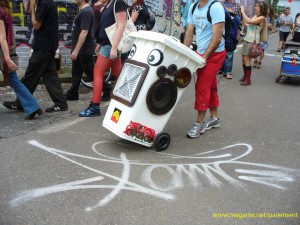 If they won’t let you Reclaim the Streets any more, then Reclaim the Lanes instead. It’s a bit sad really. The RTL party on 13 February was small but kind of fun anyway, even if everyone was funnelled into just one lane not far from the starting point. There were balloons, bikes, and budgie smugglers. When it became apparent that the procession had come to a halt people started sloping off to the bottlo in Enmore Road for supplies. The music from wheelie bin sound systems was great. And someone stuck up their photographs of the Reclaim the Streets events in Newtown from 1999 and 2000 to remind everyone what it used to be like.
If they won’t let you Reclaim the Streets any more, then Reclaim the Lanes instead. It’s a bit sad really. The RTL party on 13 February was small but kind of fun anyway, even if everyone was funnelled into just one lane not far from the starting point. There were balloons, bikes, and budgie smugglers. When it became apparent that the procession had come to a halt people started sloping off to the bottlo in Enmore Road for supplies. The music from wheelie bin sound systems was great. And someone stuck up their photographs of the Reclaim the Streets events in Newtown from 1999 and 2000 to remind everyone what it used to be like.
The back lanes of Enmore and Newtown are best known for their wall art, but there is stuff on the ground as well, mostly the signatures of artists who have done the wall pieces. I took photographs of RTL participants partying on the remnants of old pavement graffiti.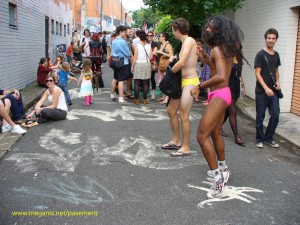

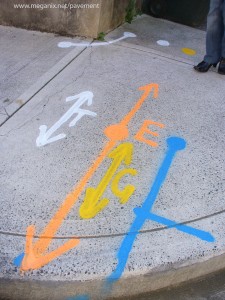
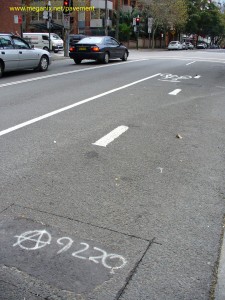
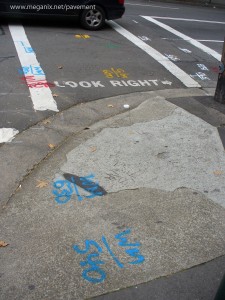
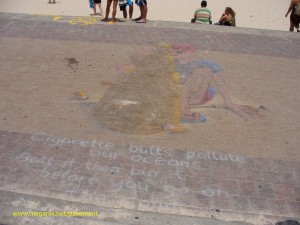
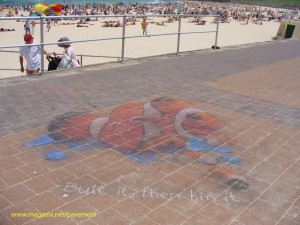
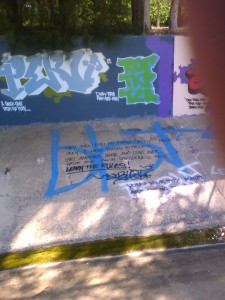

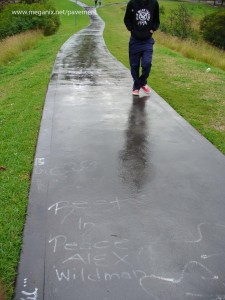
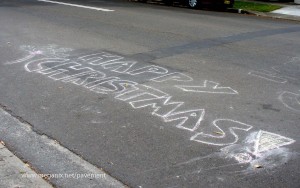
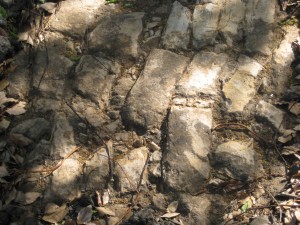 Recently uncovered by Marrickville Council during street plumbing activity under two Camphor Laurel trees on the eastern side of upper Metropolitan Road, Enmore, Sydney, are what appear to be sandstone cobblestones.
Recently uncovered by Marrickville Council during street plumbing activity under two Camphor Laurel trees on the eastern side of upper Metropolitan Road, Enmore, Sydney, are what appear to be sandstone cobblestones.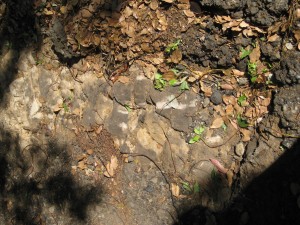 Other views suggest the sandstone course may have been associated either with some early civil works project or may have been laid in conjunction with the arrangement of street tree planting.
Other views suggest the sandstone course may have been associated either with some early civil works project or may have been laid in conjunction with the arrangement of street tree planting.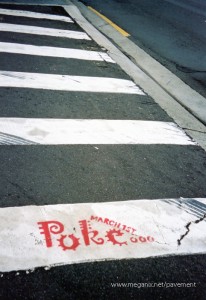 The
The 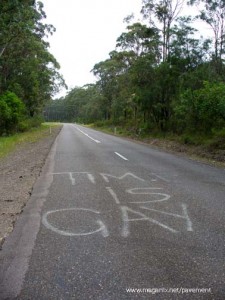 The label ‘gay’ remains a term of abuse in many situations. This piece of oversize graffiti is on Lakes Way, the road between Bulahdelah and Forster, a seaside holiday area on the central coast of NSW. It raises several questions. Is Tim P actually gay and is he being outed by the graffiti writer? Or is ‘gay’ the worst insult the writer could think of in retaliation for something Tim P has done? Why is it written on a road? Why this road? Why at this spot on the road? And by broadcasting the message to a wider audience and revealing its location, am I complicit in the vilification of Tim P?
The label ‘gay’ remains a term of abuse in many situations. This piece of oversize graffiti is on Lakes Way, the road between Bulahdelah and Forster, a seaside holiday area on the central coast of NSW. It raises several questions. Is Tim P actually gay and is he being outed by the graffiti writer? Or is ‘gay’ the worst insult the writer could think of in retaliation for something Tim P has done? Why is it written on a road? Why this road? Why at this spot on the road? And by broadcasting the message to a wider audience and revealing its location, am I complicit in the vilification of Tim P?